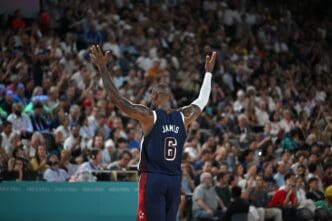Executive Summary
The Story So Far
Why This Matters
Who Thinks What?
Nike unexpectedly reported a rise in first-quarter revenue and surpassed profit expectations on Tuesday, signaling early traction for its turnaround strategy despite persistent challenges in China and increased tariff costs imposed under President Donald Trump. The sportswear giant’s shares rose as it managed to reduce bloated inventory and saw a return to growth in wholesale revenues for the quarter ending August 31.
Turnaround Efforts and Financial Performance
CEO Elliott Hill, who took the helm last year, has focused on refocusing the brand on core sports like running and developing innovative products. While the company cleared some inventory, executives cautioned that a full recovery remains distant amid a cautious consumer environment and ongoing tariff uncertainties.
Nike’s first-quarter revenue increased 1% to $11.72 billion, exceeding analyst estimates of an $11 billion decline. Earnings per share significantly beat expectations, coming in at 49 cents against a forecast of 27 cents.
Impact of Tariffs and China Market Challenges
The company now anticipates tariffs to cost approximately $1.5 billion this year, an increase from its earlier projection of $1 billion. This pressure on margins stems from President Trump’s duties on goods from countries like Vietnam, where Nike manufactures most of its footwear.
China, Nike’s third-largest market and accounting for 15% of fiscal 2025 sales, continues to be a significant hurdle, with sales declining for the fifth consecutive quarter. The company faces fierce competition from domestic brands such as Anta and Li-Ning, as well as newer rivals like On and Deckers’ Hoka.
To address the slump, CEO Hill mentioned efforts like sending U.S. basketball stars LeBron James and Ja Morant to China as ambassadors, hoping to leverage sports like running and basketball to reignite demand in the region. However, executives indicated that a recovery in China would take longer than other markets.
Outlook and Analyst Perspective
Looking ahead, Nike forecasts a low-single-digit decline in second-quarter revenue. While the struggling wholesale business is projected to achieve growth in fiscal year 2026, the company’s finance boss Matthew Friend stated that the direct-to-consumer business is not expected to return to growth in the same period, with North America leading recovery and China lagging.
David Bartosiak, a stock strategist at Zacks Investment Research, noted that while Nike “beat the low bar set for EPS and showed some wholesale strength,” underlying fundamentals remain “shaky,” pointing to direct-to-consumer weakness, margin pressure, and China softness as “flashing yellow lights.”
Key Takeaways
Despite exceeding first-quarter revenue and profit forecasts, Nike faces continued headwinds, particularly in its crucial China market and from escalating tariff costs. The company’s turnaround efforts show initial signs of progress, but executives acknowledge a prolonged path to full recovery, underscoring the complexities of navigating global market dynamics and geopolitical trade policies.








